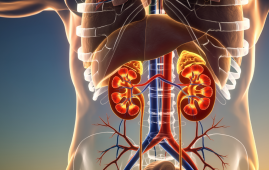

Researchers optimized prime editing (PE) for the effective correction of the cystic fibrosis (CF) transmembrane conductance regulator (CFTR) F508del mutation in human airway epithelial cells. This mutation is a three-nucleotide deletion that is the primary cause of CF. The correction efficiencies achieved were high, and functional restoration was achieved with minimal off-target effects. The study was published in the journal Nature Biomedical Engineering.
Background
PE lowers the possibility of bystander and off-target editing by enabling precise genome editing without the necessity for double-stranded deoxyribonucleic acid (DNA) breaks. PE reduces chromosomal abnormalities, p53 activation, big deletions, uncontrolled indels, and retrotransposon insertions in contrast to nuclease-mediated techniques. It works well in both mitotic and non-mitotic cells and doesn’t require donor DNA templates. Mice and non-human primates have used it successfully in vivo.
PE effectively corrects harmful mutations by combining a programmable nickase, reverse transcriptase, and PE guide ribonucleic acid (RNA). To improve its effectiveness, usefulness, and safety in clinical settings, more study is required.
About the study
Standard kits were utilized for the cloning and purification of guide RNA expression plasmids, such as Prime Editing Guide RNAs (pegRNAs), Engineered (e)pegRNAs, Nicking Guide (ng) RNAs, Dead Single Guide (dsg) RNAs, and Single Guide (sg) RNAs. In Phusion U Green Multiplex PCR master mix, DNA polymerase chain reaction (PCR) amplification was performed. Agilent Research Labs, Synthego, and Integrated DNA Technologies provided the modified synthetic pegRNAs and epegRNAs.
Through in vitro transcription, the prime editor and related messenger (m)RNAs were produced and purified. Both the American Type Culture Collection’s Human Embryonic Kidney 293T Cells (HEK293T) and the Cystic Fibrosis Foundation’s 16HBEge-F508del (Immortalized Human Bronchial Epithelial Cells Homozygous for CFTR F508del Mutation) cells were cultured in essential medium. After being separated from donors, primary airway epithelial cells were grown and underwent differentiation in PneumaCult Air-Liquid Interface media (PneumaCult-ALI) media.
Following a 72-hour incubation period, Lipofectamine 2000 was used to transfect HEK293T cells with specified plasmid quantities. Primary airway epithelial cells and 16HBEge-F508del cells were electroporated using PE RNA reagents and cultivated. Custom lysis procedures were used to extract genomic DNA, and fluorescence-activated cell sorting was used to prepare the cells for sorting.
Illumina-barcoded primers were employed in two rounds of PCR for High-Throughput Sequencing (HTS) of genomic regions. CRISPResso2 was utilized to assess editing efficiency and indels. Using PE2 method transfection and limiting dilution, a homozygous CFTR F508del HEK293T cell line was produced.
PRIDICT 2.0 (DeepPrime and Prime Editing Rational Design and Implementation Computational Tool) was used to design, synthesis, and test pegRNA sequences. CFTR channel activity was measured using chamber assays. Using Circularization for In Vitro Reporting of Cleavage Effects by Sequencing (CIRCLE-seq), off-target site nomination was carried out, and HTS was used to examine the top sites for indels and substitutions.
Study findings
The CFTR F508del mutation was targeted for correction shortly after PE was first identified in 2019. Initially, they created a homozygous clonal HEK293T cell line for this deletion in the endogenous CFTR gene. They screened pegRNAs at two F508del-proximal protospacers (NGG1 and NGG2) with varying Primer Binding Site (PBS) and Reverse Transcription Template (RTT) lengths using this cell line. With NGG1 pegRNAs, they did not see any correction, most likely because of a TTTT region that functions as a transcriptional terminator. NGG2 pegRNAs were found to correct, albeit their editing efficiency were not higher than 0.2%.
Two NGG2 pegRNAs were used in a PE3 screen against different ngRNA protospacers in order to improve rectification.Even while PE2 was not as good as the best PE3 NGG2 pegRNA, the highest mean editing was still only 0.5%. It was postulated that ineffective correction could result from chromatin state influencing edit site accessibility to Cas effectors. The accessibility of NGG1 and NGG2 by pegRNA-guided Cas effectors was validated by effective A-T-to-G-C editing with an adenine base editor (ABE).
A number of innovations in PE were created, such as the PEmax prime editor protein, epegRNAs with RNA pseudoknot patterns to guard against exonuclease degradation, and the use of MLH1dn to suppress DNA mismatch repair (MMR). Additionally, the PE6 suite was unveiled, which included prime editor Cas9 domains and laboratory-evolved RTs.
By combining these improvements, the group screened 178 epegRNAs across seven protospacers, including NGG and Protospacer Adjacent Motifs Recognized by a Modified Cas9 Variant (NGA PAMs), with different PBS and RTT lengths. A notable increase in editing rates was observed using the NGG2 PBS13 RTT41 technique, which involves specific designation of a prime editing guide RNA with a primer binding site length of 13 and a reverse transcription template length of 41.
Testing ngRNAs from the previous PE3 studies with the epegRNA NGG2 PBS13 RTT41 in a PE5max experiment was one of the next developments. As a result, a +104 nick was found, increasing editing efficiency to 0.86%. Efficiency was further increased by installing further changes around NGG2’s PAM and adding silent edits that interfered with it. The optimal approach, SE2, produced a mean editing rate of 6.8%, which was five times higher than the results of earlier attempts.
The researchers also assessed more current iterations of PE6, and discovered that PE6b and PE6c improved F508del repair even further. The greatest editing rates were obtained by PE6c using the +104 ngRNA and the optimized epegRNA with MLH1dn. Combining epegRNAs, quiet edits, PE6 variations, and dsgRNAs greatly increased editing efficiency in 16HBEge-F508del cells. A mean F508del correction rate of 51% was attained by the most effective approach.
When this method was tested on CF patients’ primary airway epithelial cells, CFTR channel activity was significantly rescued, with a mean correction rate of 25%. The precision and potential therapeutic applicability of the technique were demonstrated by the few unwanted editing consequences revealed by both on-target and off-target investigations.
In conclusion
In summary, the first PE3 experiments produced a mean correction of 0.42%. However, the application of more recent developments, such as epegRNAs, PEmax, MLH1dn, silent edits, PE6, and dsgRNAs, resulted in mean corrections of up to 11%, 58%, and 25% in HEK293T, 16HBEge-F508del, and primary airway epithelial cells from CF patients, respectively.
The improvements had very few off-target effects (≤0.1%). With a high correction-to-indel ratio and no double-stranded DNA breaks or templates, the optimized PE system streamlines possible clinical applications for the treatment of cystic fibrosis.
For more information: Systematic optimization of prime editing for the efficient functional correction of CFTR F508del in human airway epithelial cells, Nature Biomedical Engineering, DOI: 10.1038/s41551-024-01233-3
more recommended stories
 Phage Therapy Study Reveals RNA-Based Infection Control
Phage Therapy Study Reveals RNA-Based Infection ControlKey Takeaways (Quick Summary) Researchers uncovered.
 Pelvic Floor Disorders: Treatable Yet Often Ignored
Pelvic Floor Disorders: Treatable Yet Often IgnoredKey Takeaways (Quick Summary) Pelvic floor.
 Urine-Based microRNA Aging Clock Predicts Biological Age
Urine-Based microRNA Aging Clock Predicts Biological AgeKey Takeaways (Quick Summary) Researchers developed.
 Circadian Control of Neutrophils in Myocardial Infarction
Circadian Control of Neutrophils in Myocardial InfarctionKey Takeaways for HCPs Neutrophil activity.
 E-Cigarette Use and Heart Attack Risk in Former Smokers
E-Cigarette Use and Heart Attack Risk in Former SmokersKey Takeaways for Clinicians and Nurses.
 36-Week Pre-eclampsia Screening May Reduce Term Risk
36-Week Pre-eclampsia Screening May Reduce Term RiskA New Preventive Strategy for Term.
 Cardiovascular Risk and Sudden Cardiac Death in Diabetes
Cardiovascular Risk and Sudden Cardiac Death in DiabetesRising Sudden Cardiac Death (SCD) Risk.
 Poor Kidney Function and Alzheimer’s Biomarkers Explained
Poor Kidney Function and Alzheimer’s Biomarkers ExplainedPoor kidney function may influence levels.
 Walking Speed Before Hip Replacement Predicts Recovery
Walking Speed Before Hip Replacement Predicts RecoveryNew Evidence Points to a Simple,.
 Neuroblastoma Drug Combo Extends Survival in Models
Neuroblastoma Drug Combo Extends Survival in ModelsA Promising Shift in High-Risk Neuroblastoma.

Leave a Comment